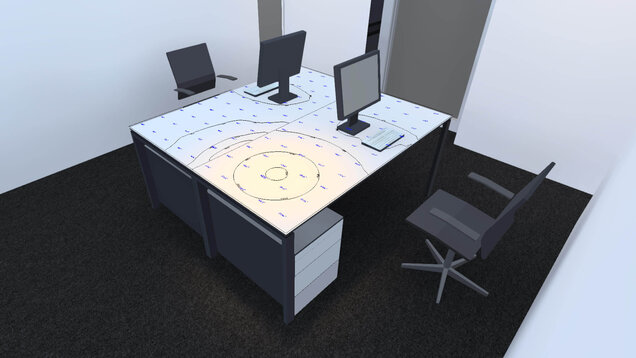Lighting design with DIALux evo in accordance with the latest standards

With DIALux 4 and DIALux evo we have two lighting design tools on the market which can be used free of charge by designers all over the world. In the past months we have invested a lot of effort and resources specifically in the development of DIALux evo to make the software even faster and more intuitive. DIALux evo is not only used for to design lighting quickly in accordance with the norms but also for lighting design and visualisation in the context of complex architecture. In this respect DIALux evo is keeping pace with the technology of our times. As well as offering even faster calculation times – above all in projects with complex 3DS files – it is also possible to import BIM projects. There will also be changes in the presentation of results with DIALux evo 9 (to be released in the middle of the year). The There will be a new layout for the output of the results so that the user can present presentation the lighting design. These are just a few of the new features in the software.
An important aspect for the user is to design light quickly in accordance with the norms. Contracts for lighting design projects are often only awarded if the designer has also taken into consideration the requirements prescribed by the norms. DIALux evo has implemented the most widespread international norms. We have compiled a selection below:
Europe
In EN 12461-1:2011 the design standard for indoor workplaces is described. DIALux evo uses the threshold values defined in this standard to evaluate the photometric results in the overview of results in the documentation.
For Germany there is a specific directive incorporated in law. DIALux evo supports the so-called workplace directive A3.4, known as ASR A3.4. This directive is mandatory for every lighting designer in Germany and defines threshold values specifically for indoor spaces.
EN 12464-2:2014 describes the current standard for workplaces outdoors. The update of this norm was most recently implemented in DIALux evo 8.
EN 13201:2015 deals with the dimensioning and evaluation of street lighting. The new standard has a fifth section about the energy evaluation of street lighting systems.
USA
DIALux evo supports approx. 3,400 application profiles from the Lighting Handbook 10th Edition of the Illuminating Engineering Society. The handbook serves as a guide for American lighting designers. In the first section the basics of photometry are explained and described. The second section of the book consists of many chapters on typical lighting applications. Altogether there are 17 chapters of applications which we have added to our standards database in DIALux evo. To find these the designer simply clicks on the region »USA« in the menu »Standards«.
In DIALux evo the designer can switch the length and photometric units to the imperial system via the path File > Settings > General settings.
Japan
With the DIALux evo 8.1 version there is an addition to the calculation methods for maintenance. The JIEG-001 Method II(2013)/III(2005) includes the calculation and application of maintenance factors for lighting installations in Japan.
Have you already downloaded the latest version of DIALux evo? If not, then you can find the free download here.